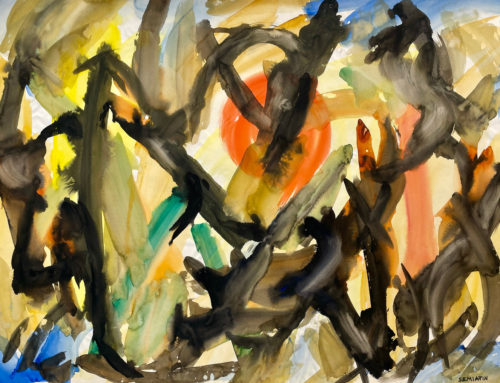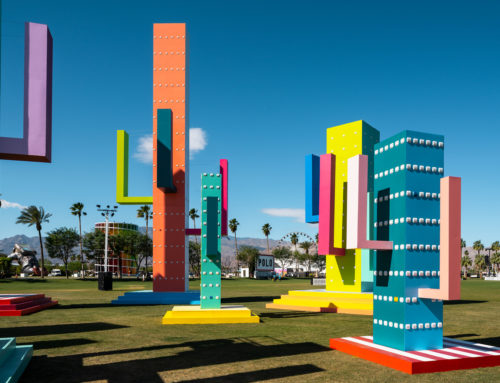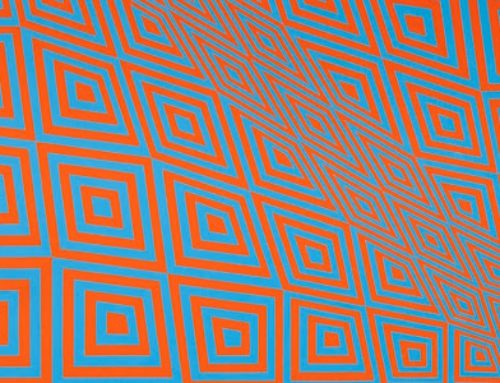We want strong, healthy communities in the Coachella Valley, and Ben Stone of Smart Growth America insists we’ll build them on art and culture.
“I can’t think of any cities or neighborhoods around the country that are models of smart, inclusive development that don’t prominently feature the arts,” Stone, director of arts and culture for the Washington, D.C.-based nonprofit organization, told participants at the workshop Big Strategies and Real Tactics for Connecting Artists, Audience, and Place in October at UCR Palm Desert.
He touts creative placemaking as the most engaging way to lift communities through creative projects and programming to bring people together, create pride in place, and stimulate economic activity.
RELATED: Creative Placemaking, Part 1: The Power of Collaboration
Prior to joining Smart Growth America, Stone was practicing what he’s now preaching as director of the Station North Arts & Entertainment District, which encompasses three revitalized neighborhoods in Baltimore, Maryland.

Ben Stone explains different types of cultural districts and how they benefit from creative placemaking initiatives at CDAC’s Oct. 12 workshop, Big Strategies and Real Tactics for Connecting Artists, Audience, and Place. Photo/Gregg Felsen.
Station North, a state-designated district offering tax incentives for adaptive reuse of vacant buildings, became known for its public art projects and programs that, Stone says, encourage “strong supportive relationships with local artists, designers, residents, businesses, and institutions” and help steer development to reflect the values and authenticity of the community. “Projects that highlight the distinctiveness of a place seem most likely to excite and connect local stakeholders and visitors.”
Station North projects include Open Walls Baltimore, an international street art festival; the YNOT Lot, an outdoor event venue encouraging daily interactions with art, performance, and design; the Koban Project, where artists transform a vacant police koban; and BMORE Seoul to Soul, a performance series combining traditional and contemporary Korean American and African American music and dance.
The Coachella Valley has seen creative placemaking on a smaller scale. Coachella Walls (pictured above), for example, aligns with the city’s downtown Pueblo Viejo Revitalization Plan. On the other end of the valley, the Palm Springs Public Art Commission partnered with Palm Springs Unified School District, local photographer Chari Godakanda, and local residents to provide an opportunity for student photographers and an engaging exhibition, Portraits of a City, for the community. Westfield Palm Desert hosted STREET art and music festival and partners with the nonprofit Art Is Inc. to give local artists a place to exhibit and interact with the community. Many cities, organizations, and creative people collaborate during events such as Modernism Week, Coachella Valley Music & Arts Festival, and Desert X, which will return in 2019.
We have a lot more work to do in the desert, and there’s a role for every visual and performing artist, community organization, public agency, business owner, and resident.
Your engagement will help:
• Unite and engage neighbors through accessible activities and programs.
• Create a deeper understanding of the area’s culture, heritage, and issues.
• Provide opportunities for artists and high-quality programs for residents and visitors.
• Transform places into destinations with authentic programs emphasizing authenticity of place.
Creative placemaking makes communities more resilient to gentrification, bridging diverse neighbors, stimulating volunteerism, and even increasing voter turnout participation. “The arts get people in the community to interact and get to know one another,” Stone said at the workshop.
It begins with networking — meeting public and community leaders, artists, business owners, educators, and local residents.
California Desert Arts Council’s monthly Arts Salons provide these networking opportunities at venues across the Coachella Valley. Creative placemaking will be on everybody’s mind at the December 7 Arts Salon at 5:30 p.m. at the downtown Coachella studio of Armando Lerma. Come earlier for a walking tour of the Coachella Walls murals at 4:30 p.m. Click to RSVP
Here are some excellent resources for creative placemaking:
• Placemaking: What if We Built Our Cities Around Places (Project of Public Spaces) offers a simple explanation of creative placemaking and its potential outcomes and benefits for a community.
• How to Do Creative Placemaking (National Endowment for the Arts) includes instructional and thought-provoking case studies and essays from today’s leading thinkers in creative placemaking. It describes the diverse ways that arts organizations and artists can play an essential role in the success of communities.
• Creative Placemaking: How to Do it Well (Federal Reserve Bank of San Francisco) addresses challenges in partnering, project design, securing finance, and evaluating progress and offers insights from research, consulting, public speaking, and community engagement.
• Creative Placemaking Toolbox (D.I.Y. Creative Placemaking) provides tools and resources to get started on your own cultural facility development or to explore the practice of creative placemaking.
• The Role of Artists & The Arts in Creative Placemaking (Goethe Institut) offers a reader on a wide range of topics and issues, from policymaking to storytelling.
• Arts, Culture, and Transportation (ArtPlace America) identifies ways that transportation professionals can integrate artists to deliver transportation projects more smoothly, improve safety, and build community support.
• 15 Questions to Ask About Creative Placemaking Proposals (ArtPlace America) offers questions you should ask as you’re crafting your proposal.
• Best Practices for Creative Placemaking (Brinshore Development) offers 10 best practices for project success.
Photo: The Band, artist Nunca’s mural in the Coachella Walls exhibition, is located on the east-facing wall at the southeast corner of Sixth Street and Orchard Avenue. Photo/Courtesy Greater Palm Springs CVB







